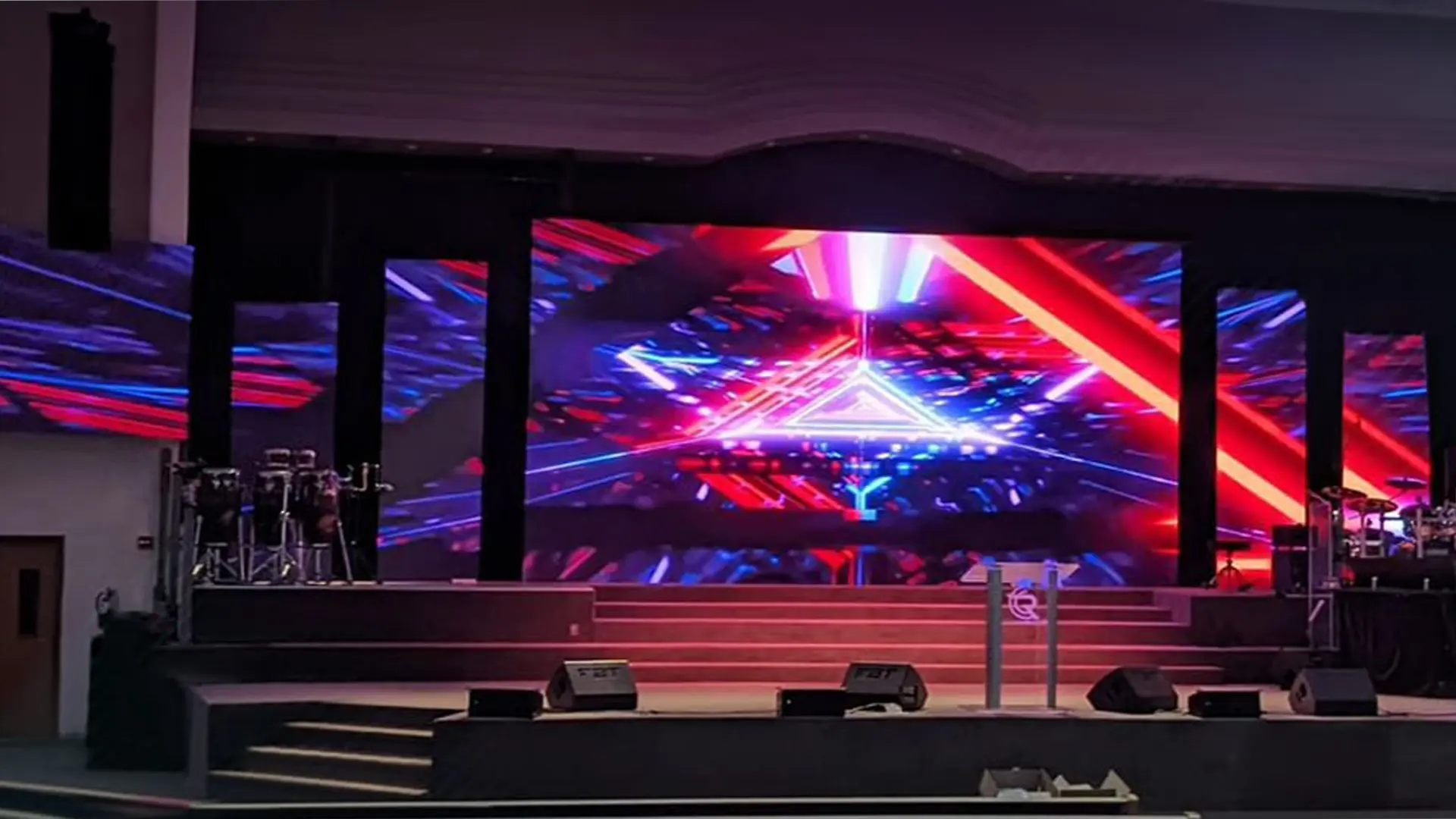
In today’s high-production environments—whether it's a concert, corporate event, theater show, or live broadcast—the **rental stage LED screen** plays a central role in delivering immersive visual experiences. However, integrating these displays with the broader AV ecosystem is often overlooked, leading to technical failures that undermine audience engagement.
Poor integration can result in:
Synchronization problems between LED walls and lighting cues
Color mismatch with projection or broadcast cameras
Lag in live feeds affecting speaker timing
Signal loss during critical moments
This guide outlines the 7 essential steps to ensure your **rental LED display screen** integrates flawlessly with your sound, lighting, media servers, and control systems—from pre-production planning to on-site execution.
The first step in any AV-LED integration is ensuring signal formats are compatible across your setup. Most modern **stage LED displays** accept the following inputs:
HDMI 2.1: Supports 4K@120Hz and 8K@60Hz
SDI: Ideal for broadcast-grade reliability (supports 6G/12G)
DisplayPort: For ultra-high refresh rates
DVI/VGA: Legacy options—avoid if possible
| Best Practices | Action Items |
|---|---|
| Signal Transmission | Use fiber optic cables for distances over 50ft |
| Input Matching | Ensure media server outputs match LED processor inputs |
| EDID Management | Use EDID emulators to avoid resolution mismatches |
Pro Tip: In live productions, SDI is preferred over HDMI due to its superior cable locking mechanism and long-distance stability.
Without proper synchronization, even the highest-resolution **LED screen for events** can cause disruptions such as misaligned strobe effects or delayed video playback.
Genlock ensures frame-accurate sync between LED processors, media servers, and lighting desks
Timecode Sync using SMPTE or Art-Net aligns all AV elements
MIDI Show Control can trigger LED scene changes during concerts
Warning: Many budget-friendly LED controllers lack genlock capabilities—always verify before signing a rental agreement.
If your event includes filming or live broadcasting, you must optimize your LED screen settings to avoid moiré patterns and flickering on camera.
| Parameter | Recommended Setting |
|---|---|
| Refresh Rate | ≥3840Hz |
| Shutter Speed | Match to 1/60 or 1/120 |
| Scan Mode | Progressive (not interlaced) |
| Pixel Pitch | ≤P2.6 (finer = better for close-ups) |
Pro Tip: Always conduct a camera test before the event—some LED panels include broadcast modes specifically designed to minimize on-camera artifacts.
For dynamic events like concerts or festivals, seamless content switching is crucial. Ensure your system supports:
Instant transitions between live feeds and pre-recorded content
Multi-layer compositions (e.g., picture-in-picture, lower-thirds)
Cloud-based content management for last-minute updates
| Software | Use Case |
|---|---|
| Disguise | High-end concerts, mapping, multi-screen shows |
| Resolume Arena | VJing, live music visuals |
| Novastar VX4S | Corporate presentations, basic playback |
| Blackmagic ATEM | Live production switching |
Avoid: Consumer-grade players like laptops running PowerPoint—they lack frame-accurate syncing and fail under pressure.
One of the most overlooked aspects of AV integration is power and data logistics. Underestimating power requirements can lead to brownouts or total failure during the event.
| Screen Size | Estimated Power Consumption |
|---|---|
| 10m² @ P2.5 | ~5kW (requires 220V/3-phase) |
| 50m² @ P3.9 | ~15kW (needs dedicated circuit) |
Key Steps:
Calculate total power draw for LED, lighting, and audio gear
Use UPS systems to protect against power drops
Run power and data cables separately to avoid EM interference
Red Flag: Rental providers who don’t supply power distribution diagrams may not be prepared for large-scale events.
Color consistency across all visual elements is key to maintaining brand integrity and professional aesthetics.
Use a spectrophotometer (e.g., X-Rite i1 Pro) to calibrate D65 white point
Adjust gamma curves to match other displays or projections
Perform calibration in actual venue lighting conditions
Pro Tip: Some LED screens support 3D LUTs for precise color grading—ideal for broadcast or film-style setups.
Even flawless planning isn't enough without real-world testing. Follow the "24-hour rule"—test everything at least a day before the event.
Testing Checklist:
Stress-test all signal paths from source to screen
Simulate worst-case scenarios (e.g., unplugged cables, failed panels)
Train crew on emergency switchovers and troubleshooting
Essential Backup Gear:
Extra LED panels (5–10% of total)
Backup media server and controller
Redundant power supplies and network connections
Important: Ensure your rental contract includes on-site technical support and spare parts.
✔ All signals are format-compatible (HDMI/SDI/DP)
✔ Genlock is enabled across LED, lighting, and media servers
✔ Camera tests confirm no moiré or flicker
✔ Content playback is frame-accurate and synchronized
✔ Power infrastructure can handle peak load
✔ Color calibration matches other AV components
✔ Backup systems and procedures are in place
The true potential of a **high-resolution LED display** is unlocked only when it's fully integrated into your AV system. Whether you're producing a concert, conference, or live TV show, attention to detail in signal flow, synchronization, color accuracy, and technical backup will prevent costly mistakes and elevate the overall experience.
Ready to take your event production to the next level? Partner with an experienced **LED screen rental provider** who understands AV synergy—not just pixel pitch.
<!--!doctype-->Hot Recommendations
Hot Products
Get a Free Quote Instantly!
Talk to Our Sales Team Now.
If you are interested in our products, please contact us promptly
Reach out to our sales team to explore customized solutions that perfectly meet your business needs and address any questions you may have.
Email Address:info@reissopto.comFactory Address:Building 6, Huike Flat Panel Display Industrial Park, No. 1, Gongye 2nd Road, Shiyan Shilong Community, Bao'an District, Shenzhen city , China
whatsapp:+86177 4857 4559